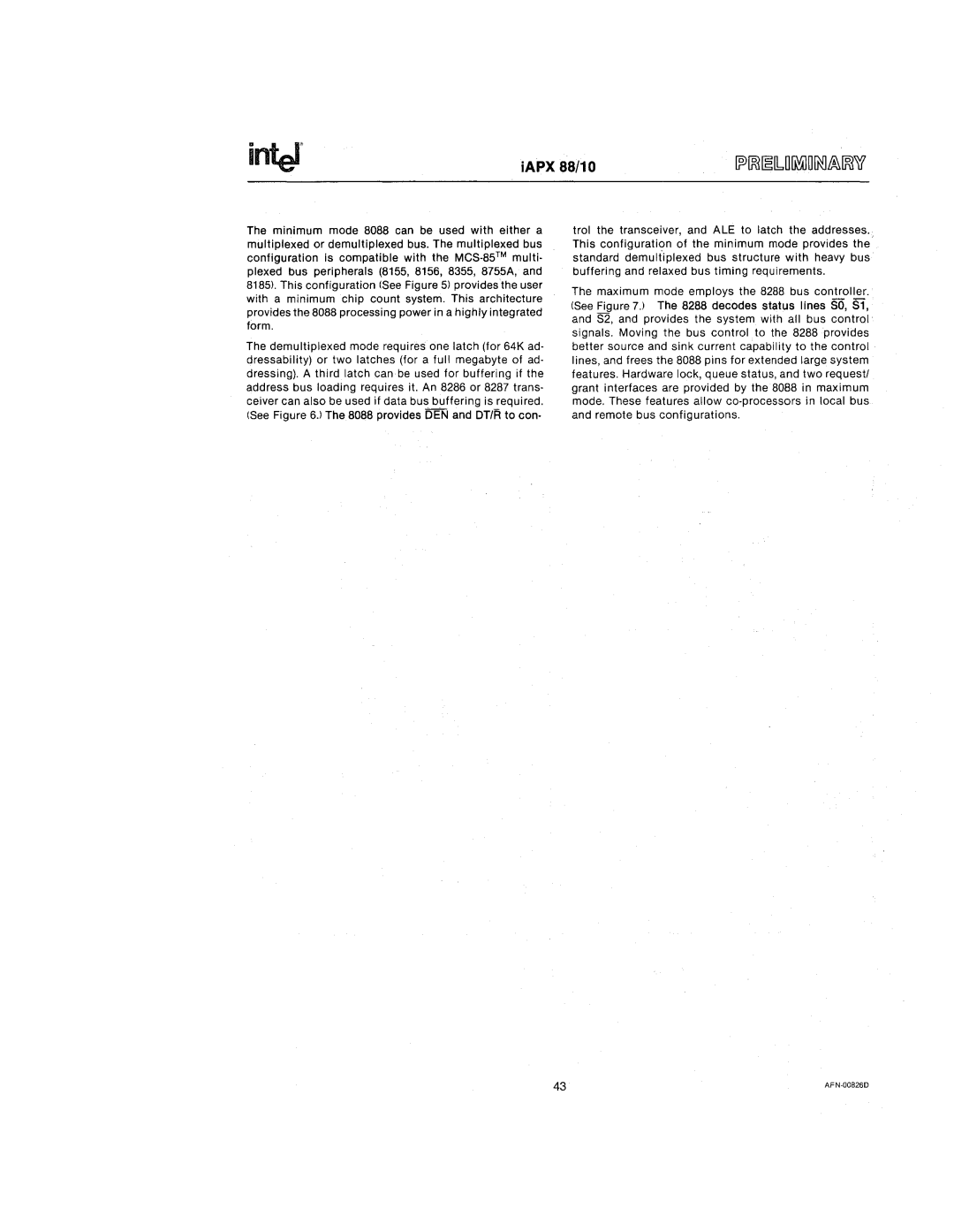
iAPX 88/10
The minimum mode 8088 can be used with either a multiplexed or demultiplexed bus. The multiplexed bus configuration is compatible with the MCS·85™ multi· plexed bus peripherals (8155, 8156, 8355, 8755A, and 8185), This configuration (See Figure 5) provides the user with a minimum chip count system. This architecture provides the 8088 processing power in a highly integrated form.
The demultiplexed mode requires one latch (for 64K ad· dressability) or two latches (for a full megabyte of ad· dressing). A third latch can be used for buffering if the address bus loading requires it. An 8286 or 8287 trans· ceiver can also be used if data bus buffering is required. (See Figure 6'>The 8088 provides DEN and DT/R to con·
trol the transceiver, and ALE to latch the addresses. This configuration of the minimum mode provides the standard demuliiplexed bus structure with heavy bus buffering and relaxed bus timing requirements.
The maximum mode employs the 8288 bus controller. (See Figure 7.) The 8288 decodes status lines SO, S1, and S2, and provides the system with all bus control' signals. Moving the bus control to the 8288 provides better source and sink current capability to the control lines, and frees the 8088 pins for extended large system features. Han;jware lock, queue status, and two requestl grant interfaces are provided by the 8088 in maximum mode. These features allow co·processors in local bus and remote bus. configurations.
43 |
|
